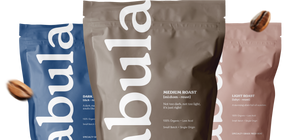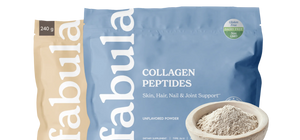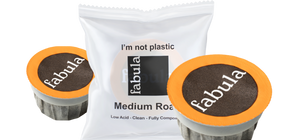Low acid coffee... what is that actually? This is a question we get a lot. Fabula coffee drinkers feel the difference in their bodies, but also want to learn and understand why – and if this is a natural process.
First, some basics (back to school!): In science, acidity is measured on the “Ph Scale”, which goes from 0 to 14. Curiously, the mid-point – 7 – is neutral. The lower the value, the more acidity. Orange juice is around 3.5-4, whereas industrial acids regularly are below 1.
WHAT IS ACIDITY - AND WHAT IS IT NOT?
Acidity in coffee is a term frequently used with much confusion. Measuring it is fairly straightforward, but there is no uniform methodology to prepare the coffee being measured. Adding to the confusion is that some acidity in coffee is actually a good thing – the sugars and oil molecules in the coffee is what makes a coffee so tasty, but it is also what can upset our stomachs and systems.
So, acidity is about a lot more than what can be measured on a PH scale. It also relates to aroma and flavor profiles, and the experience of the cup. If the beans are burnt to a crisp, the coffee will be very low acid, but also it will be undrinkable. And this is the real trick: Creating a coffee that is low in acidity, and retaining its deliciousness.

OK, SO HOW DO YOU DO THAT?
For Fabula, this is not a 'process of removal' with chemistry or other artificial processes. It's a design of the coffee, from the beginning to the end of the creation of the coffee.
It starts with finding the right quality beans, grown under the right circumstances. There are 100s of different arabica varieties, and some have profiles that are lower in acidity than others. You also have robusta bean varieties, but these are more commonly used in instant coffee and mixed into large, commercial coffees to keep costs down. You will only find arabica varieties in your Fabula coffee.
The growing region and altitude of the farm also has an effect on acidity. Coffees in Latin America tend to be lower in acidity than for example Africa or South East Asia. Within each region, there are thousands of microclimates, each one different.

HOW DOES ROASTING IMPACT ACIDITY?
Once you have the right bean, from the right microclimate in the right region, grown at the right altitude, you start the roasting, and this is where it gets to be a real craft. The longer and higher temperature of the roast, the more you 'roast out' the acidity - but if too much, it will get sour and bitter, and lose the beans' unique flavor and characteristic. It can become bland, or even worse, undrinkable. You want to roast the coffee gently, with great care, much like a master chef would prepare a precious cut of meat to perfection. You will need to watch and adjust constantly the temperature, air flow, humidity, the timing of “the first crack” of a coffee bean, the cool-off curve, and a myriad of factors.
Creating a well tasting, low acidity is really one of balancing out different factors - a bean and roast that gives a higher Ph value (i.e. lower acidity), but at the same time has that round, balanced, rich, chocolatey flavor (usually associated as a low acid profile), but without losing the sweetness, texture and unique flavor characteristics that makes coffee great. This is not an easy thing to do, and for us it is a journey that never ends.
Happy Healthy Coffee Drinking from Fabula!
Sip of the Month: Kawacom

$29.99
Awaken your senses with Uganda’s coffee—each sip a taste of mountain-born mastery!… read more





